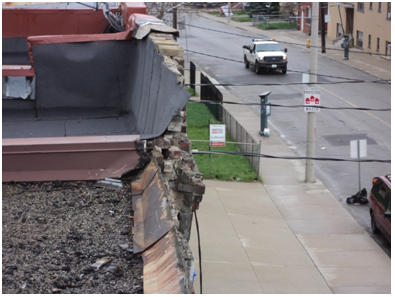
|
The roof parapet of a 2-story townhome has a partial collapse and outward deflection. The mortar is deteriorated and disintegrated and looks powdery.
Since there is no mechanism to prevent falling other than friction with mortar and brick, and its proximity to the sidewalk, potential injury is expected if no repair work take place asap.
|
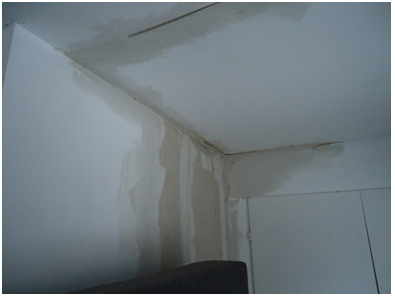
|
In the basement, there were areas of water staining and damage on the drywall. Also, there was evidence of water leakage which resulted in staining of the ceiling tile.
Water leakage due to pipe break of a pipe leading to the second floor bathroom, which is directly above the main floor bedroom, and which was on a poorly- or un-insulated wall. The cold weather in January caused the pipe to freeze and burst, which would have sent water pouring down the wall.
|
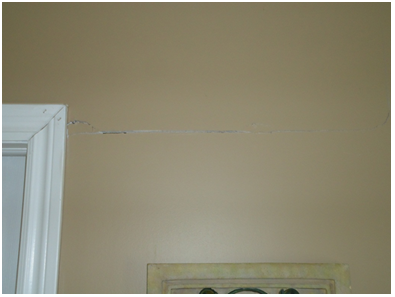
|
Drywall has cracked, or separated as a result of the movement of the exterior wall.
The locations where the drywall was separated showed no signs that the cracks were old, as all surfaces were clean and new. Were they aged, we would expect to see signs of discolouration as well as dust and other debris. There was clean, white surfaces
|
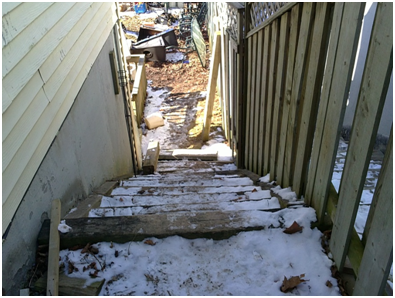
|
There is no handrail for the stairway to the backyard of the house. Building code requires at least one handrail for stair and stair well opening that has more than 3 risers.
It is recommended to install a handrail on one side of the stair according to the design requirement by the latest building code.
|
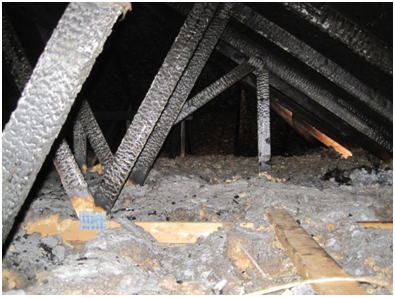
|
The roof truss, purlin, roof sheathing, member connections, fiber glass insulation were observed to be burnt and heavily charred. Some of the ceiling joists were observed to be charred.
There was no severe fire damage found on the ceiling joist and the ceiling sheathing.
It is suspected the attic of the house had a fire previously and the roof structure should be replaced.
|
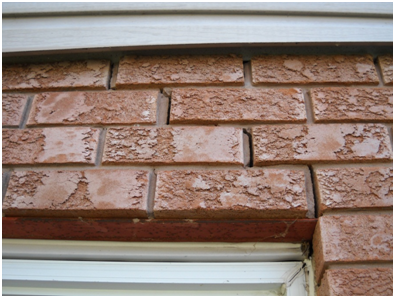
|
There were step cracks along the mortar joints of the brick veneer wall over the top of the windows and the door.
Sharp edges of the cracks indicate that it was recent and could be active.
|
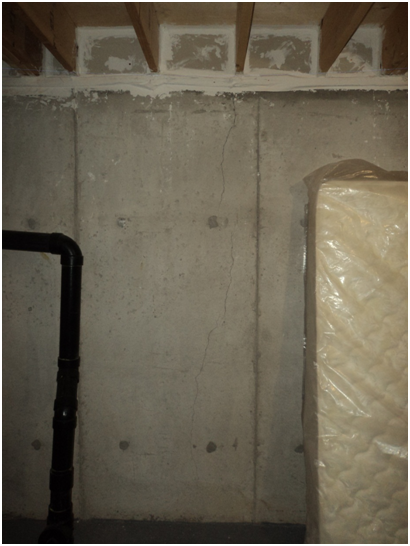
|
Vertical cracks were observed on the concrete foundation wall inside the basement immediately below the floor joists.
Since there are no bowing or deflection on the wall and the floor joist, these cracks are considered normal and not an indication of structural damage or overstress.
The cracks are called “shrinkage cracks” that are likely cause by ”release of energy” due to expansion and contraction of the concrete wall.
|

|
There were signs of oil spill near the piping outside the cottage house. A later excavation (as shown in the picture) reveals significant area of soil was contaminated near the foundation.
The repair will trigger a claim to the insurance company and substantial environment remediation work involving underpinning the house foundation and excavation.
|
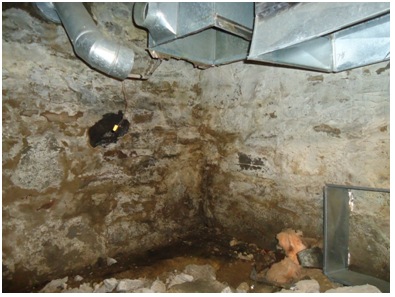
|
The duct for the HVAC was found disconnected in the crawlspace of this house.
The inspection was done in summer when the portable air condition was running on first floor. But what about heating in the winter?
|
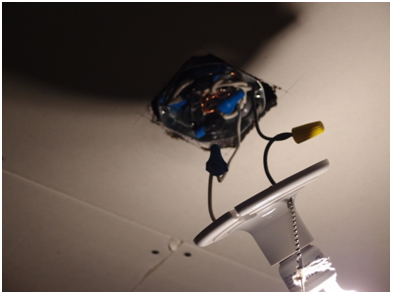
|
It is not unusual to found light bulb installed like this.
It is recommended to provide proper installation by a professional electrician as the current condition could cause electrical shock to people in the house.
|
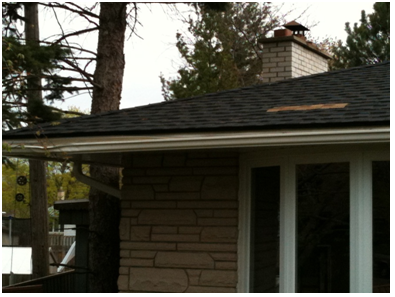
|
A piece of asphalt shingle was missing from this roof and can cause water penetration into the attic and the second floor.
The eave trough around the corner was deformed and possibly damage by fallen tree branches.
|
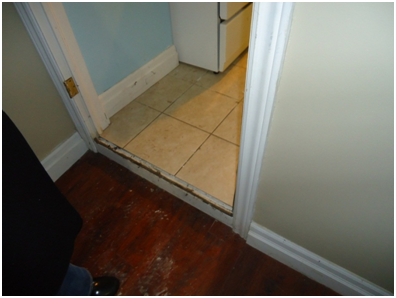
|
There was an area in the basement where the floor was 75mm lower than adjacent areas. This step is a tripping hazard, and does not conform to building code.
|
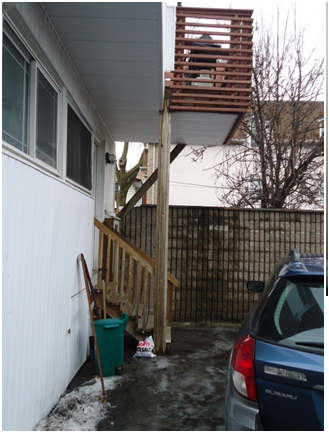
|
The second floor addition has a cantilevered area, which is supported by a wood post.
This post appears to be driven into the ground with no sign of a proper foundation. If a foundation exists below the pavement, there is no projection above grade to protect the wood from rotting.
Also, the post is situated in a parking area, with no protection from the possibility of being struck by a car.
|
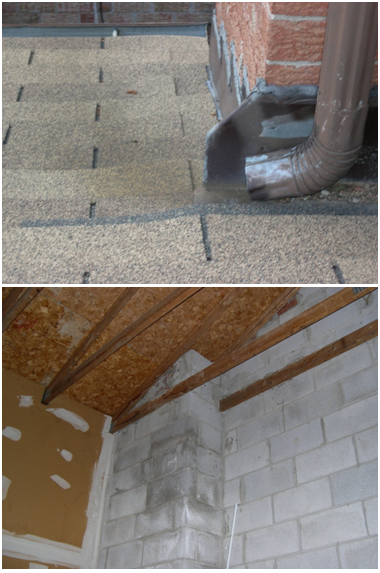
|
There is discoloration of shingle of the garage roof adjacent to a downspout. The poor location of downspout discharge large amount of water during a rain event and cause moisture problem on the immediately below masonry wall inside the garage
|
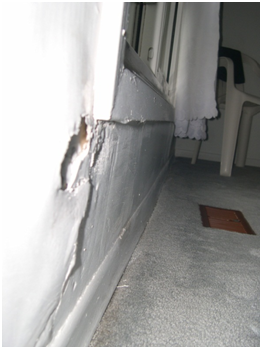
|
The drywall damage at the lower window corner could be cause by condensation on the window due to loss of heat in the winter season.
There was no signs of water penetration from the exterior wall.
|














